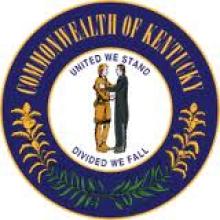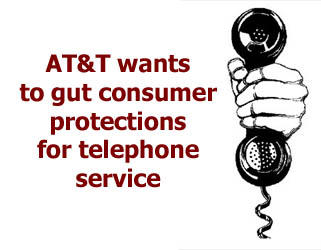
Fast, affordable Internet access for all.

Earlier this year we reported on SB 88 in the Kentucky legislature. The bill, sponsored by Republican Senator Paul Hornback and authored by AT&T, would have eliminated the "carrier of last resort" requirement and reduced consumer protections. A similar bill in 2011 was also defeated by a coalition of public interest groups.
This is one of a series of bills crafted by AT&T and ALEC that has been explained in great depth by the National Regulatory Research Institute in their 2012 review [pdf] as well as by Bruce Kushnick in this report [pdf].
Advocates on the side of consumers, including ILSR, were happy to see the bill defeated in the House. Though AT&T will undoubtedly be back again in future years, this victory shows the massive corporate carriers are vulnerable. In addition to blocking harmful deregulation, this is an example of how an organized coalition can protect the public interest.
I spoke with Mimi Pickering, Director of the Appalshop Community Media Initiative in Whitesburg, Kentucky. She described how local groups defeated the bill with the facts. Appalshop teamed up with nonprofit Kentucky Resources Council (KRC), AARP Kentucky, the AFL-CIO, Kentuckians for the Commonwealth, and several other groups. The coalition explained the complexities of the proposal and spelled out what could happen to landline service without consumer protections.
KRC is an environmental advocacy group that helped stop SB 88 by providing critical research to educate the public and lawmakers. In Episode #44 of our podcast, Pickering and KRC Director Tom FitzGerald describe the coalition's work. KRC put the bill on its "Ugly" list early in the session and Fitzgerald dedicated significant time to analyzing the bill and spreading the word about its pitfalls.
In a January Kentucky.com opinion piece, Fitzgerald described in detail how passage of the bill would affect households directly and indirectly. Pickering says his ability to translate legislative jargon was critical to the victory. By spelling out the likely outcomes for legislators and citizen groups, KRC and FitzGerald gave lawmakers the facts they needed to make informed decisions.
AT&T relied on a campaign of fear and misinformation. In contrast with FitzGerald's analytical opinion piece, AT&T Kentucky's President Mary Pat Regan penned a fluff piece about SB 88. She claimed the proposal would encourage competition and that residents already had abundant choice. Kentuckians, especially those in rural communities, knew better. Throughout, AT&T claimed that failing to pass the bill would result in Kentucky falling behind technologically.

Kentucky media picked up on the story, perhaps anticipating an interesting replay of the 2011 battle. Kentucky Tonight with Bill Goodman, televised an interview with FitzGerald, an AT&T attorney, Ron Bridges from the AARP Kentucky, and the executive director of Citizens for a Digital Future (CDF), an astroturf group supporting the group. Pickering believes exposure from the show increased momentum and contributed significantly to the campaign.
CDF, an organization claiming to represent senior citizens, ran an aggressive robocall campaign to push the bill. FitzGerald investigated the roots of CDF and found their leading national member was AT&T. He describes another member organization, 60 Plus, as "Rove-esque."
The robocall strategy back-fired when legislators of targeted districts in eastern Kentucky took offense. The calls named legislators who opposed the bill and claimed they were trying to impede progress in Kentucky and circumvent the legislative process. Chairman of the House Tourism Development and Energy Committee and Speaker Pro Tem Larry Clark from eastern Kentucky knows how hard it is to get cell phone service in rural areas. He was particularly annoyed by CDF/AT&T's "heavy-handed" threats.

AT&T and its allies also refused invitations to resolve problems with the bill. FitzGerald wrote several versions of a compromise proposal but AT&T would not give workable solutions the time of day. In the end, obstinance hurt their position.
When AT&T promised to increase its investment in Kentucky, FitzGerald looked at the numbers they supplied. He found no evidence for an increase beyond what they were already slated to invest. Lawmakers did not appreciate the wiley attempt to fool them.
Pickering, FitzGerald, and other leaders of the coalition used facts, education, and a willingness to cooperate to shed light on AT&T's dark motives. With a little media coverage, the strategy defeated millions of lobbying dollars. We know AT&T and other powerful telecommunications giants will continue to push for similar deregulation. However, this struggle in Kentucky can definitely be called a VICTORY for the public interest.
